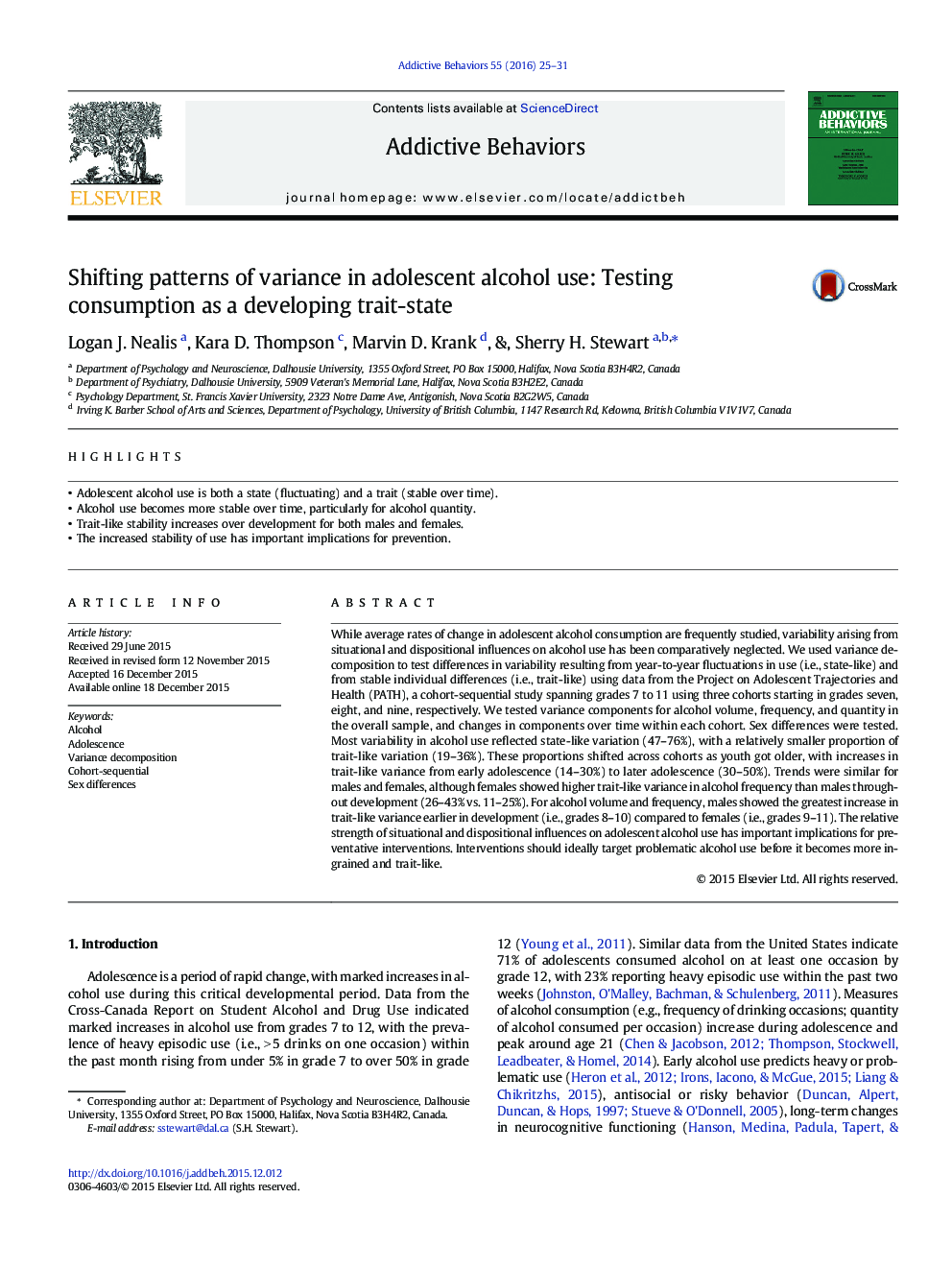| Article ID | Journal | Published Year | Pages | File Type |
|---|---|---|---|---|
| 7260331 | Addictive Behaviors | 2016 | 7 Pages |
Abstract
While average rates of change in adolescent alcohol consumption are frequently studied, variability arising from situational and dispositional influences on alcohol use has been comparatively neglected. We used variance decomposition to test differences in variability resulting from year-to-year fluctuations in use (i.e., state-like) and from stable individual differences (i.e., trait-like) using data from the Project on Adolescent Trajectories and Health (PATH), a cohort-sequential study spanning grades 7 to 11 using three cohorts starting in grades seven, eight, and nine, respectively. We tested variance components for alcohol volume, frequency, and quantity in the overall sample, and changes in components over time within each cohort. Sex differences were tested. Most variability in alcohol use reflected state-like variation (47-76%), with a relatively smaller proportion of trait-like variation (19-36%). These proportions shifted across cohorts as youth got older, with increases in trait-like variance from early adolescence (14-30%) to later adolescence (30-50%). Trends were similar for males and females, although females showed higher trait-like variance in alcohol frequency than males throughout development (26-43% vs. 11-25%). For alcohol volume and frequency, males showed the greatest increase in trait-like variance earlier in development (i.e., grades 8-10) compared to females (i.e., grades 9-11). The relative strength of situational and dispositional influences on adolescent alcohol use has important implications for preventative interventions. Interventions should ideally target problematic alcohol use before it becomes more ingrained and trait-like.
Related Topics
Life Sciences
Neuroscience
Behavioral Neuroscience
Authors
Logan J. Nealis, Kara D. Thompson, Marvin D. Krank, Sherry H. Stewart,
